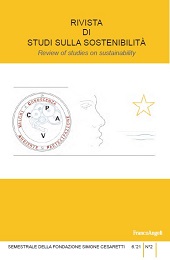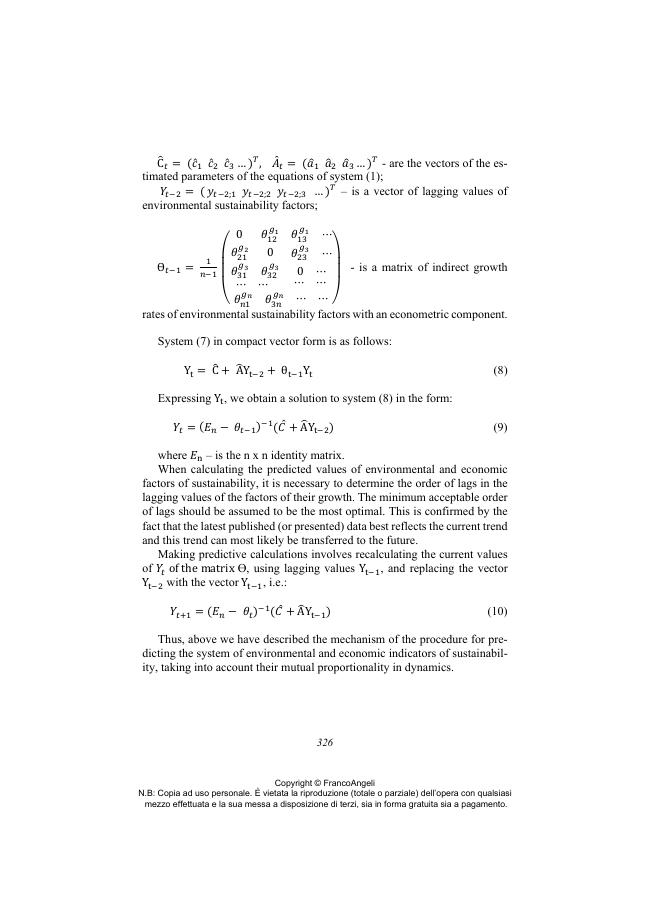Forecasting the environmental and economic indicators of the enterprise, taking into account their mutual proportionality in dynamics for the purposes of sustainable development
P. 319-332
The study proposes the construction of a statistical model of the company's ecological and economic state, using the synthesis of econometrics and multidimen-sional forecasting methods, which provide the correlation of the obtained indicators, taking into account mutual proportionality in relation to the dynamic characteristics of environmental sustainability factors within the framework of the sustainable development paradigm. A combined model is implemented with a step-by-step modification of the matrix predictor into a regression-matrix one.
Using the method of least squares, the study shows the codependency of the ecological and economic indicators of the sustainability of the enterprise: the cost of capital repairs of fixed assets for environmental protection; labor payment expenditures, including deductions for social needs of employees involved in environmental pro-tection; operating environmental costs; sales revenue; profitability of production and sales. The obtained regression coefficient showed a high degree of dependence of the closeness of the relationship of the considered environmental and economic indicators of sustainability (more than 98%), which proves their codependency and the need for their balanced use, since the value of at least one of the indicators outside the optimal range allows us to state a high probability of financial damage for enterprises.
Using a combined model based on a matrix predictor, the study demonstrates the calculation of the predicted values of environmental and economic indicators of sustainability for 2021. The peculiarity of this model is to take into account the lagging (up to 2 years) values of factors and their growth over the previous period (for 1 year). The proposed model contains a mechanism of multivariate expectations, which allows us to consider various options for the future. Also, this model allows the automation of the forecasting process, which is reflected in the implementation of the trend of transition to the digital space in the implementation of sustainable development goals. [Publisher's text]
Fait partie de
Rivista di studi sulla sostenibilità : XI, 2, 2021-
Articles du même numéro (disponibles individuellement)
-
Informations
Code DOI : 10.3280/RISS2021-002021
ISSN: 2239-1959
DISCIPLINES
KEYWORDS
- Forecasting, environmental and economic indicators, combination, matrix predictor, sustainable development



